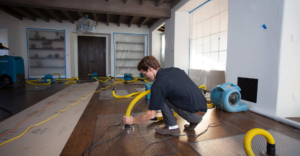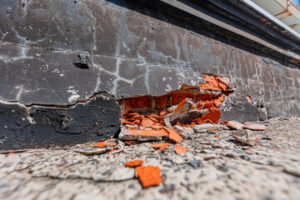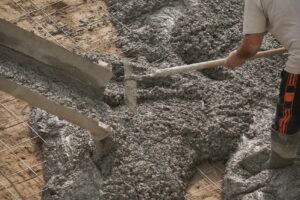A septic tank is a buried, water-tight container that receives all wastewater from household plumbing. The wastes in the tank settle or float, with heavy solids sinking to form sludge and oils and grease floating to the top as scum.
The liquid wastewater, called effluent, exits the tank through a pipe into a drain field where soil and microbes filter it. Regular inspection and pumping are critical to septic tank maintenance. For more information, click the Website to proceed.

When used properly, a septic tank offers a reliable alternative to municipal sewer systems. However, improper use can cause serious problems. To avoid these, you should learn some practical strategies that will ensure your septic system works as it should for years to come.
All drains in your home lead to the main sewer line that slopes downward toward your septic tank. Every time you flush a toilet, take a shower or wash clothes, wastewater enters the sewer line and flows into your septic tank. Bacteria break down this sewage, separating it into water and sludge.
Solid waste settles in the bottom of your tank, while fats and greases drift to the top. The liquid waste exits the septic tank through an outlet pipe, which is sized according to your household needs. A baffle keeps solids from clogging the outlet pipe or the drain field.
A baffle is also placed in the inlet drains to prevent the flow of non-biodegradable waste items into your septic tank. These include cigarette butts, cotton buds/swabs, menstrual hygiene products, condoms and cooking oils. These waste materials can clog and overflow your septic tank.
If you don’t want to risk these items entering your septic tank, consider installing inlet drain screens. These are available from most hardware stores.
Chemical cleaners can wreak havoc on a septic system, killing bacteria that breaks down solids in the tank and pipes. It’s better to use natural cleaning products that don’t contain harsh chemicals. Also, don’t flush sanitary products down the toilet, as these can cause the septic system to overflow and back up into your home. This can be very dangerous and expensive to fix.
All water from your home runs through one main drainage pipe that leads to the septic tank underground. Once inside, the septic tank holds waste for enough time so that solids settle to the bottom and oil and grease float to the top. The septic tank also provides some level of wastewater treatment by adding bacteria that break down the remaining solids and liquids. When the septic system is functioning correctly, liquid wastewater (effluent) exits the septic tank through pipes into the drain field.
The septic tank is normally made of concrete, fiberglass, or polyethylene to ensure that it’s not prone to cracking while underground. It’s important that the septic tank is located well away from homes and driveways so that it doesn’t leak.
Inside your septic tank, solid waste is separated into three different layers: sludge, effluent and scum. Sludge is the solid waste that sinks to the bottom of a septic tank where natural anaerobic bacteria break it down. Scum is the lighter layer that contains oils and fats from food and soap. It will often float to the surface as it decomposes. Bacteria in the septic tank can be boosted with an enzyme additive that helps the process along.
Once the septic tank is full, it will need to be pumped. Your professional will be able to help you determine how often your tank needs to be pumped.
It’s best to keep the grass mowed and to avoid parking on the area around the tank, absorption field, and distribution box. This helps to reduce the chance of damaging your septic system by compacting soil and blocking flow. It’s also a good idea to map out your septic system or have it marked with stakes so that you can safely locate system components when doing yard work or performing home maintenance.
A septic tank is an essential component of a home’s wastewater treatment system. The water that leaves your house goes through the tank, which separates into three layers: solid waste (sludge), liquid effluent and scum. Solid waste sinks to the bottom of the tank, where bacteria decompose it over time. The middle layer of liquid effluent exits the tank through underground perforated pipes into a drain field or leach field, where gravel and soil filter it as it sinks to the ground.
Bacteria are the key to how a septic system works. They break down waste, creating a slurry of sludge and wastewater that is clean enough to percolate into the soil. This is a natural process, but bacteria do not always work quickly or efficiently.
Adding septic tank additives can help speed up the process. Keeping the tank free of large, solid waste items also helps ensure that bacteria can operate properly. Some common septic tank-clogging items include cigarette butts, condoms and sanitary napkins. Other items that can clog a septic system include cotton balls, tampons and grease.
If you plan to sell your home, you should make sure the septic system is functioning properly before placing it on the market. You can hire a professional to perform an inspection and a septic tank pumping before you list your property. Some sellers prefer to have a contingency in the contract for a septic inspection to protect themselves against potential problems with the septic system. In these cases, the buyer must submit a satisfactory septic tank inspection report to complete the sale. A septic tank is a sealed precast concrete box, typically located underground outside your home. You can usually locate it by looking for a lid that’s flush with the ground.
Typically, the biggest cost is the labor of installing the septic tank itself. However, there are other factors that can influence the total price tag of a new septic system including the tank size and material, local regulations, and land surveying. Generally, the best way to determine how much your septic system will cost is to contact multiple septic contractors in your area and receive detailed quotes. This will help you compare rates and find a contractor within your budget.
It’s essential to remember that a septic tank is not a DIY project and should always be installed by a professional to prevent serious, costly mistakes. It’s also important to consider ongoing maintenance costs. These include regular pumping (which should be done every 3 to 5 years) and periodic sludge removal or desludging of the tank. When the sludge layer gets too high, it can block the drains in your home and result in wastewater backups. Other signs that your septic system needs attention include a strong odor, slow-running drains, and water puddles in the yard.
A septic tank can be made of fiberglass or concrete, with concrete being the more common choice. Fiberglass tanks are a bit more affordable, but they tend to deteriorate over time and may require more frequent repairs or replacement. When deciding between a fiberglass and concrete septic tank, it’s important to weigh the pros and cons of each option to determine which is the right fit for your household and property.
To reduce the strain on your septic tank, it’s a good idea to be mindful of water usage and to only flush toilet paper and human waste. Coffee grounds, diapers, and lint from synthetic clothing can clog the drains and septic system, as can grease and harsh chemicals. It’s also helpful to schedule regular septic tank inspections to identify problems and potential issues before they become costly.
All of your household waste and sewage flows through pipes into the septic tank. Solids, called sludge, settle at the bottom of the tank while fats and oils rise to the top. Bacteria in the tank slowly breaks down some of these solids over time. Liquids, called effluent, flow out of the tank into your drain field.
When solids build up in the septic tank they can overflow into the absorption field. This oversaturation can cause the septic system to malfunction or even back up into your home. The best way to avoid this is to have the septic tank pumped regularly.
Your septic tank should be pumped when the sludge layer is one-third full. It’s also a good idea to have your septic tank inspected at least once a year. The septic inspector will be able to recommend an appropriate pumping schedule for your tank.
To keep the septic tank from filling up too quickly, try to limit how much you use water in your house. This includes showers, toilets, washing machines and dishwashers. Also, try to spread out laundry sessions throughout the week rather than doing several loads all at once. You can also help by using less toilet paper and avoiding putting anything down the drain that doesn’t decompose, such as cigarette butts, left over medications, handwipes, tissues, plastics and kitty litter.
It’s a good idea to have septic tank risers installed to make the process of pumping and inspections more convenient. This makes it easier for the professional to get into the septic tank and can save you the hassle of digging in your yard each time. Having the risers installed can also prevent your yard from getting dirty when the septic tank is emptied.



